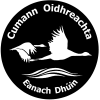They used to dine upstairs at the Mill House, in a large room facing the road, with a cabinet in the corner which contained the finest bone china and polished silverware. There was a mahogany table in the centre of the room, and the lady of the house would often rap its surface with her knuckles and emphasise it was solid mahogany and proceed to give an account of the local doctor offering twenty pounds when he had occasion to visit the house. if they were prepared to sell it. However, even though twenty pounds was a substantial sum of money in the early part of the century, on no account would the table be sold, for at the time, corn mills throughout the country were flourishing and the owners were financially secure, so there was neither the need nor the desire to part with such a magnificent piece of woodwork.
A Tale of the Mill House








